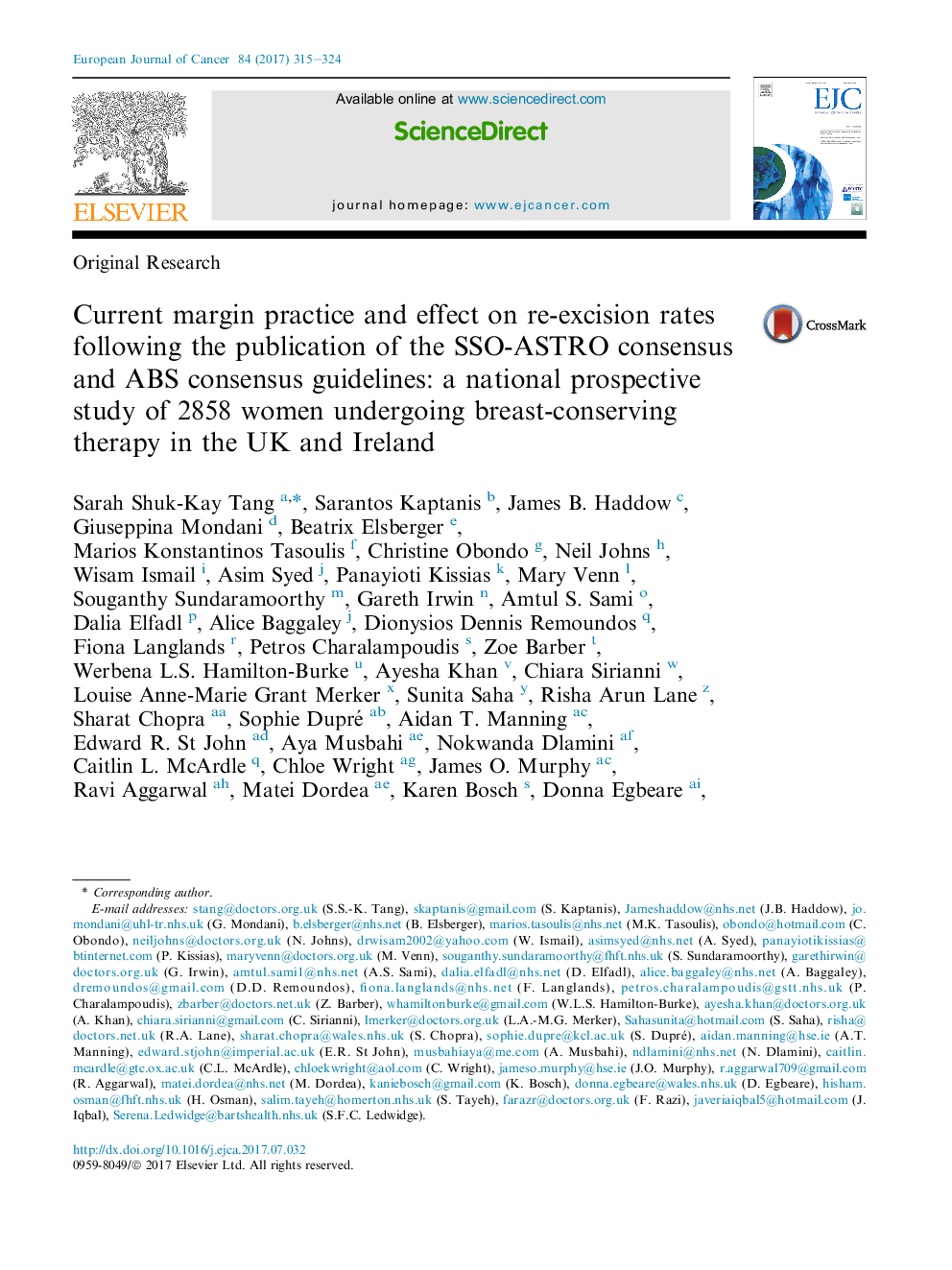| کد مقاله | کد نشریه | سال انتشار | مقاله انگلیسی | نسخه تمام متن |
|---|---|---|---|---|
| 5526184 | 1547048 | 2017 | 10 صفحه PDF | دانلود رایگان |

- Margin policy is varied across the United Kingdom (UK) and Ireland with greater variation for ductal carcinoma in situ (DCIS), than for invasive disease.
- Only 4% of UK breast units follow the Society of Surgical Oncology and American Society for Radiation Oncology's (SSO-ASTRO) consensus guidelines for margins.
- The national re-excision rate in this study is 17.2%.
- Adopting a uniform national margin policy will result in a modest reduction in re-excision rate to 15%.
- The majority (65%) of re-excisions are for tumour at the inked margin rather than for close margins.
IntroductionThere is variation in margin policy for breast conserving therapy (BCT) in the UK and Ireland. In response to the Society of Surgical Oncology and American Society for Radiation Oncology (SSO-ASTRO) margin consensus ('no ink on tumour' for invasive and 2 mm for ductal carcinoma in situ [DCIS]) and the Association of Breast Surgery (ABS) consensus (1 mm for invasive and DCIS), we report on current margin practice and unit infrastructure in the UK and Ireland and describe how these factors impact on re-excision rates.MethodsA trainee collaborative-led multicentre prospective study was conducted in the UK and Ireland between 1st February and 31st May 2016. Data were collected on consecutive BCT patients and on local infrastructure and policies.ResultsA total of 79 sites participated in the data collection (75% screening units; average 372 cancers annually, range 70-900). For DCIS, 53.2% of units accept 1 mm and 38% accept 2-mm margins. For invasive disease 77.2% accept 1 mm and 13.9% accept 'no ink on tumour'. A total of 2858 patients underwent BCT with a mean re-excision rate of 17.2% across units (range 0-41%). The re-excision rate would be reduced to 15% if all units applied SSO-ASTRO guidelines and to 14.8% if all units followed ABS guidelines. Of those who required re-operation, 65% had disease present at margin.ConclusionThere continues to be large variation in margin policy and re-excision rates across units. Altering margin policies to follow either SSO-ASTRO or ABS guidelines would result in a modest reduction in the national re-excision rate. Most re-excisions are for involved margins rather than close margins.
Journal: European Journal of Cancer - Volume 84, October 2017, Pages 315-324